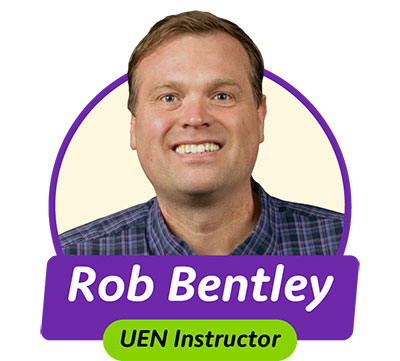UEN Teacher Tips
In today’s digital age, integrating modern tools like podcasts into the classroom can significantly enhance the learning experience. A podcast is an audio or video file that can be easily downloaded or streamed, granting access to a vast library of knowledge on every topic imaginable - from breaking news and educational explorations to lively narratives and discussions.
Need some ideas to get started? Check out these examples:
For Teachers
-
Lecture Supplements- I know several teachers who use podcasts to supplement their in-class lectures, allowing students to revisit complex topics at their own convenience.
-
Guest Speakers- Inviting guest speakers to the classroom can be logistically challenging, but with podcasts, we can bring diverse perspectives and real-world insights directly to our students.
-
Flipped Classroom- By assigning podcast episodes as homework, we can use class time for interactive discussions and hands-on activities. This flipped classroom model fosters a more engaging and participatory learning environment.
-
Review- Creating review podcasts for exam preparation helps students reinforce their learning. These episodes can cover key concepts, common exam questions and study tips.
For Students
-
Project-Based Learning- Enhance students' understanding of subject matter and critical thinking and communication skills by assigning podcast creation as a project. Students can also dive deep into research, scriptwriting and audio editing.
-
Collaborative Learning- Podcast projects often involve teamwork, allowing students to collaborate, share ideas and learn from one another. Mirroring real-world scenarios and preparing them for future professional environments.
-
Voice and Agency- Giving students the opportunity to create podcasts on topics they are passionate about allows them to express their ideas and perspectives. This boosts their confidence and fosters a sense of ownership over their learning.
-
Audience Engagement- The knowledge that their work will be heard by peers, teachers and possibly a wider audience motivates students to produce higher-quality content and can provide a sense of accomplishment and relevance.
If you’d like to get started creating your own podcasts, Adobe Podcast may be the perfect tool for your classroom.Adobe Podcast includes recording tools that reduce ambient noise and enhance audio quality. Plus, you can easily edit your podcast transcript and the audio will automatically match your changes.
Watch the video accompanying this article to learn more about using Adobe Podcast. Give podcasting a try! Your classroom might just become the next big thing in the world of educational podcasting.
Helpful Resource:
Rob is the product manager behind Adobe’s educational solutions. He specializes in empowering teachers to harness the full potential of multimedia for effective instruction, while also nurturing students’ ability to create captivating educational content like computer games, animations, web pages and much more. Previously Rob taught Spanish and language arts in Granite School District.

Share this tip:
You Might Also Like:
- End-of-Year Celebrations and Activities
- Safely Try Out AI Tools in Your Classroom
- 3 Surefire Ways To Increase Student Engagement
- Making Technology-Aided Music with Your Students
- Adobe Express Graphic Organizers


 UTAH EDUCATION NETWORK
UTAH EDUCATION NETWORK

 Justin
Justin Braxton
Braxton Dani
Dani Rob
Rob Val
Val

